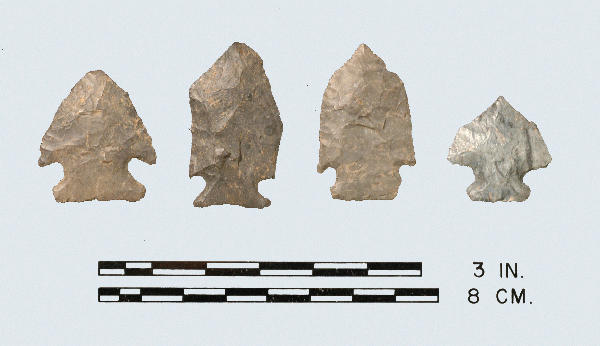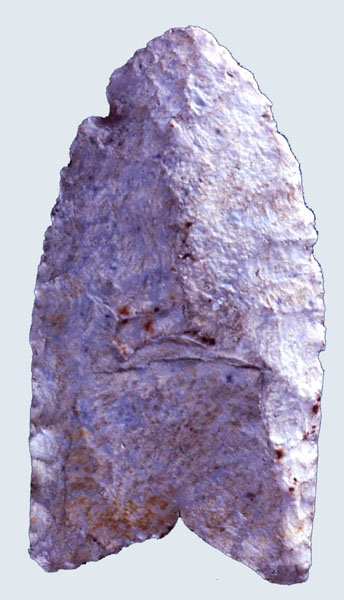
Jacks Reef Notched: all chert.
Type Corner Notched Late Woodland
Defining Attributes
The Jack’s Reef Corner Notched is a broad, thin, corner notched point of medium size, frequently with angular edges.
Chronology
The Jack’s Reef Corner Notched point dates to mainly the Late Woodland period, 700 to 1300 CE. At the White Site, Chenango County, New York, a radiocarbon date of 905 +/- 250 CE was obtained from a feature associated with this point type. A similar notched point was found by Coe (1995) at the Town Creek Mound, North Carolina and dated 1000 to 1300 CE.
Description
- Blade: The blade is broad and thin, and edges are excurvate or angular. The general shape of the blade is often pentagonal.
- Base: The base is flared, straight. The stem is corner notched. Barbs are small to large, thin and sharp.
- Size: Length ranges from 25 to 57 mm. Maximum thickness ranges from 5 to 6 mm.
- Technique of manufacture: Pressure flaking on a thin primary flake.
‘
Discussion
A notched variant of the Pee Dee Pentagonal point, illustrated by Coe (1995), is very similar to Jack’s Reef Corner Notched. In general, early dates for the notched pentagonal shape derive from the New York area and later dates come from North Carolina. Some of the non-pentagonal Jack’s Reef Corner Notched points may resemble Palmer points in general shape, but unlike Palmers, they do not exhibit ground bases.
Defined in Literature
This type was originally defined by Ritchie (1961 revised 1971) based on excavations in 1947 and 1951 at the Point Peninsula Jack’s Reef site in Onondaga County, New York.
References



